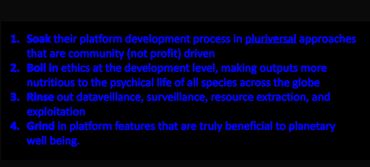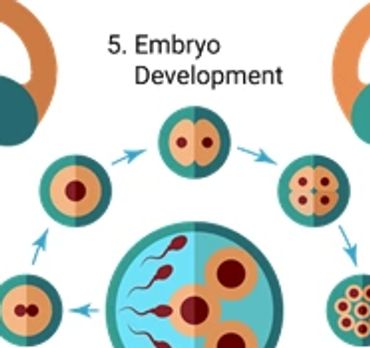
LESLi - Legal, Ethical, Social and Libidinal Implications
LESLi Bioethics
The admixture of biologically exuberant interspecies variety through genetic engineering and the cloning of spectacular hereditary cascades should only be approved through an aesthetic advisory commission made up of artists, art historians, off-the-locus aesthetics specialists and subaltern bioethical tangentialists.
ongoing research on Bio Art Ethics
Bio Art RESEARCH ON HUMAN ARTS


Participatory Workshops

Participatory Workshops
10 Bioart Ethics Tenets for Transgenic Breeding as bioart
° trials using heritable germline editing should be permitted only after Aesthetic review in an Artistic Regulatory framework that includes the following criteria, restrictions and structures:
° restriction against the knocking-in of gene edits that have been convincingly demonstrated to cause or to strongly predispose kindred to the disease of cultural banality, the condition of esoteric-lessness showing evidence of adverse normalizing;
° comprehensive plans for long-term, multigenerational Follow-up, mating schemas, entertainment contracting and pornographic options, all the while still respecting personal autonomy;
° restrictions in place preventing naive enhancement optimism aesthetics in the human genome as pragmatic and utilitarian arguments are not enough to insure contemporary artistic standards (unless level of Hyperrealism meets peer practitioner standards); encourage: maximum arty opacity while still being consistent with the legal invasion of patient privacy;
° emotional alternatives informing editing structures and goals have been formed in the aesthetic absence of reason;
° restrictions to allowing a serious kitsch disease or poor aesthetic conditioning respected (unless level of irony meets Contemporary standards);
° ongoing, rigorous oversight during clinical trials of the aesthetics of the procedure and the exhibition and documentation of the research participants;
° continued reassessment of je ne sais quoi in terms of both artistic and aesthetic benefits and risks, with broad ongoing participation and input by the artists, art historians and art critics on gene constructs of mutagenic choice;
° reliable subaltern insight oversight mechanisms to prevent extension of technology to uses other than creating serious art or novel and iconoclastic conditions; and
° availability of incredible or even unbelievable pre-clinical and/or clinical data on risks and potential contemporary time-based, new media bioart benefits due to successful indoctrination, infiltration and transgene infection of multigenerational procedures.
Mind thGAP - Transgenic Human Genome Alternatives Project, more info at Hackteria
----------
A reflection on the workshops series Mind thGAP - Transgenic Human Genome Alternatives Project, and an invitation to collaborate on the CGCB - Creative Germline Construct Bank, an online open source bioinformatics database of diverse genetic constructs for germline entry using the GOSHPA - General Open Source Plasmid for Human Arts, as a chassis for transgene infection into a newly fertilized ovum.
Mind thGAP is a collaborative Programme with Hackteria ZET – Open Science Lab in Zürich and Adam Zaretsky, and is supported by friends and hosts from the local community around the hackerspace collective Bitwäscherei, the Casa Coconut, Swiss Mechatronic Art Society, Center for Alternative Coconut Research, a.n.y.m.a., hackuarium, RandeLab, GaudiLabs and many more!
Bio Art RESEARCH ON Transdisciplinarity & disorientation

Excerpts from a longer work by Paz Tornero
shared at FEMeeting 2019 Women in Art, Science and Technology, Portugal

IN PROGRESS...
Paz Tornero provides a differential bioarts ethics through Tarkovsky’s 1979 film STALKER. Can we develop an ethic for bioarts through the framework of disorientation?
Three characters embark on a journey of inner discovery, where they travel to the void in search of a room in the mysterious Zone area restricted by the government. It is rumored that a meteorite or a spaceship fell into the zone, which grants any wish to the travelers.
A writer and a scientist walk towards this zone; their names will forever be unknown to the spectators, and the guide who was already there is a dreamer and spiritual man.




Copyright © 2024 BEAK - EIN:
Bioart Ethical Advisory Kommission